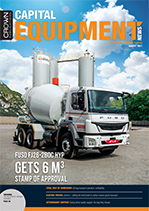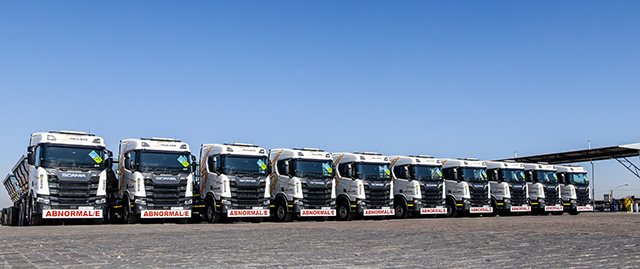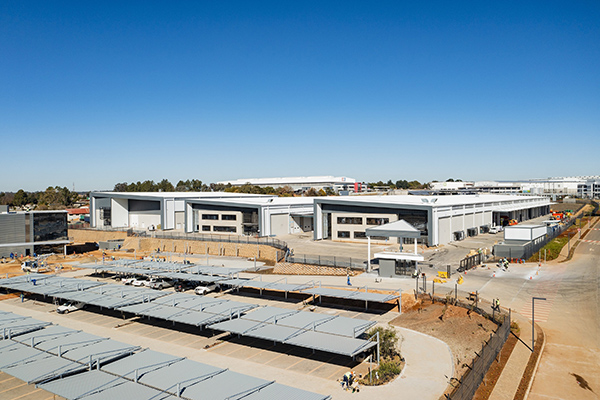 On the Cover: Métier Mixed Concrete is the first company in South Africa to put the FUSO FJ26-280C HYP through rigorous testing for a month. Both management and drivers give this enhanced product a thumbs up and declare it fit to accommodate a 6 m³ capacity. This is one of the key buying factors for the company, which has just purchased six models of this game-changer to further expand its fleet of almost 100% Daimler products.
On the Cover: Métier Mixed Concrete is the first company in South Africa to put the FUSO FJ26-280C HYP through rigorous testing for a month. Both management and drivers give this enhanced product a thumbs up and declare it fit to accommodate a 6 m³ capacity. This is one of the key buying factors for the company, which has just purchased six models of this game-changer to further expand its fleet of almost 100% Daimler products.
Métier Mixed Concrete started from humble beginnings in 2007 with one plant in Durban, and despite a relatively volatile operating environment over the years, the company has made great strides which led to the development of six additional plants in Gauteng. The flourishing company is a wholly owned subsidiary of Sephaku Holdings Limited and is well-positioned as a market leader in the construction industry, remaining at the forefront of ready-mix concrete technology.
The company has been a long-standing valued customer of Daimler Trucks & Buses Southern Africa for the past 13 years, operating with predominantly the Mercedes-Benz Axor and Arocs models. With a near 100% Daimler fleet, it proudly boasts 100 – 170 vehicles between its fleet and owner-drivers. Métier Mixed Concrete confirms that it has been waiting in great anticipation to add reliable and durable FUSO products to its fleet.
Driving transport operators’ profitability
In the midst of a challenging business environment, transport operators are being squeezed in every direction, hence a renewed focus on total cost of ownership (TCO). With its TCO business model that entails a three-pillar approach, Scania delivers an accurate measurement tool that covers various elements critical to customer profitability.

When times are this tough, price tends to dictate whatever people buy. Understandably, in a difficult economy capital isn’t always available, and procurement decisions are forcibly taken based on capital cost, without necessarily factoring the ‘hidden’ lifecycle ownership costs.
Total cost of ownership is no new term, but what does it mean for cash-strapped transport operators who need to make wise decisions on their capital equipment purchases? Ongoing costs after you have written the cheque for the truck are just as important, if not principal, as the purchase price.
A focus on TCO analysis uncovers both the obvious and the hidden costs of ownership. TCO highlights the difference between purchase price and long-term costs. There is actually a general school of thought according to which owning the equipment could cost between five and eight times the purchase price, if not more.
Scania’s value creation, explains Harold Donachie, Scania Truck sales manager, is built on the company’s ability to provide its customers with profitable and sustainable transport solutions that contribute to the success of their businesses.
Giving mines quality support, the way they choose
The high quality of Sandvik Mining & Rock Solutions’ customised aftermarket service offerings is now underpinned by one of the global firm’s largest workshop facilities – recently opened in Kempton Park, near Johannesburg.

According to Imraan Amod, business line manager – services at Sandvik Mining & Rock Solutions, the new 62 000 m² site housing its new state-of-the-art Khomanani facility further enhances the OEM’s capability to serve customers.
“Our new mega-workshop incorporates both the mechanical soft-rock cutting business and the hard-rock mining business,” says Amod. “We are now able to integrate the skills and competencies of each field under one roof. This further strengthens our foundation of expertise available to support our product range.”
The facility has even allowed for added capability, he says, such as the extensive new bead blasting bay, large wash bay with robotic washers, modern spray-painting bay and newly equipped machine shop. The investment in the latest machinery has included vertical and horizontal boring mills, milling machines and CNC machines – keeping the company abreast of latest technology.
He highlights that the aftermarket support philosophy of Sandvik Mining & Rock Solutions is based on close collaboration with customers – providing service and maintenance models that complement the mines’ strategic objectives.
“We don’t force any specific system and process onto customer, but rather work with them to develop a working model that suits the aftermarket priorities on their sites,” he says. “This often needs lengthy discussion over a period of time, but the benefits are definitely worthwhile in terms of finding an optimal level of support and format of delivery.”








